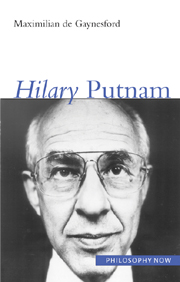15 - Conclusion: an integrated vision
from Part IV - Content: later perspectives
Summary
I believe that the unfortunate division of contemporary philosophy into separate ‘fields’ often conceals the way in which the very same arguments and issues arise in field after field. We can only regain the integrated vision which philosophy has always aspired to if at least some of the time we allow ourselves to ignore the idea that a philosophical position or argument must deal with one and only one of these specific ‘fields’.
Putnam, Ethics Without Ontology (2004a: 1)Previous chapters have described the settings and circumstances into which Hilary Putnam's philosophical thought fitted during his formative years; they have defined the character of that thinking over the whole course of his development, depicting its contours in relation to alternative perspectives on core issues; and they have examined the content of his major contributions to philosophy, narrating the most significant movements in his thought across the span of a long career. This final chapter is retrospective and stimulated by the passage quoted above. Given what we now know of Putnam, what sense can we make of what is suggested here: that his contributions to philosophy do in fact reflect his vision of it as a unified field; that these contributions are themselves to be regarded in a unified way?
- Type
- Chapter
- Information
- Hilary Putnam , pp. 178 - 196Publisher: Acumen PublishingPrint publication year: 2006



